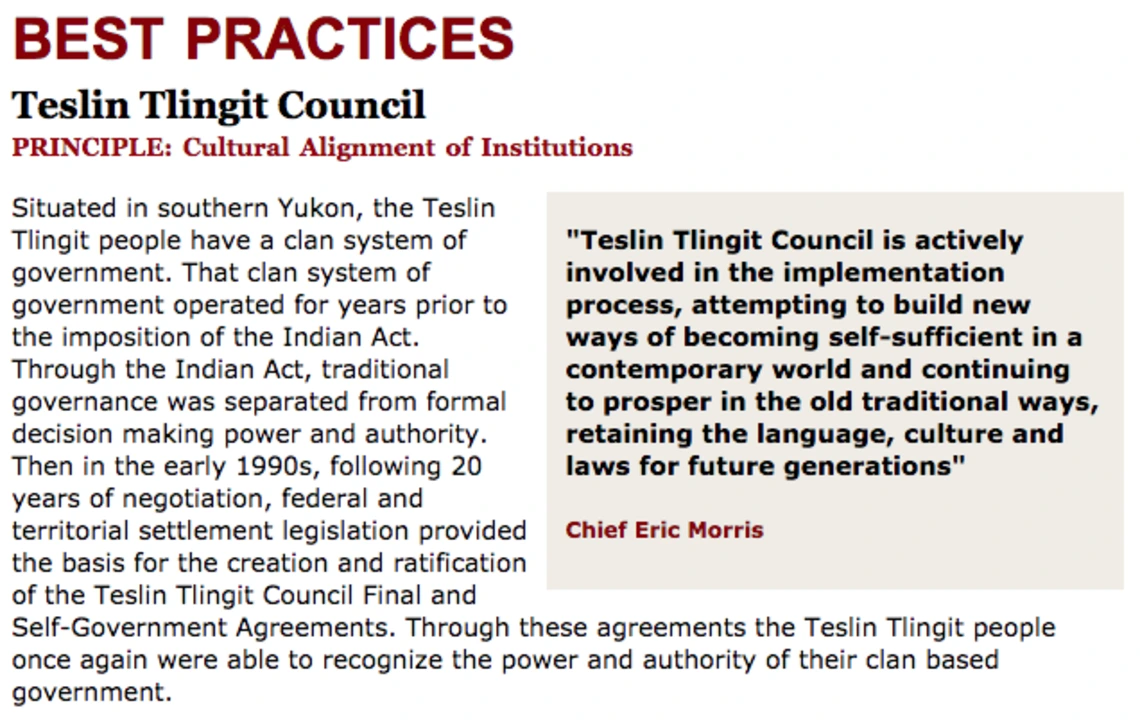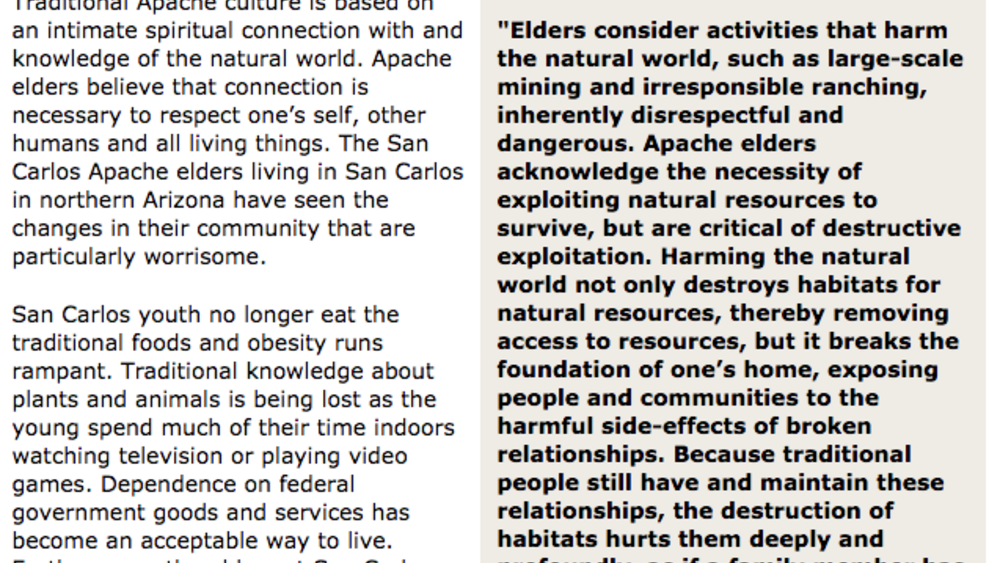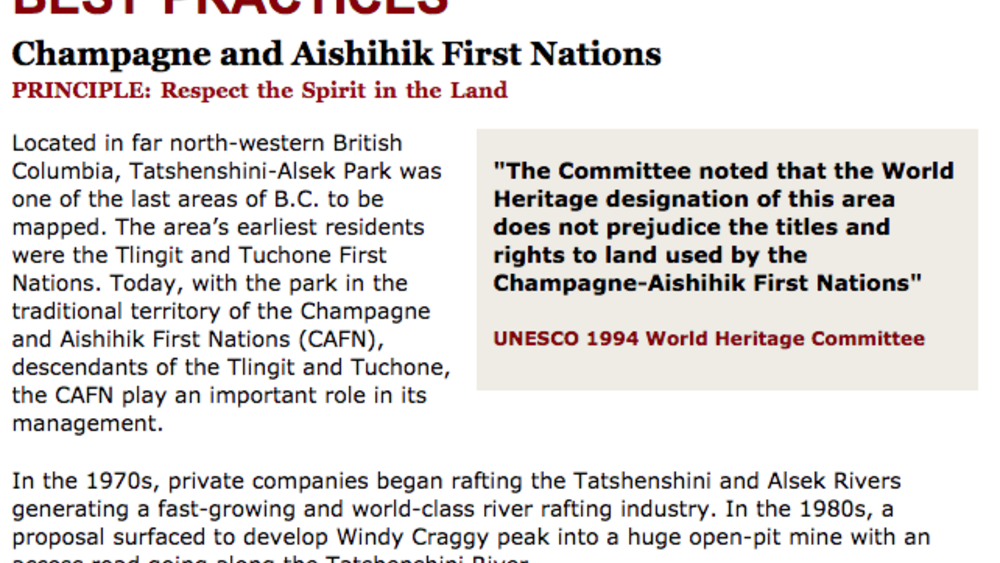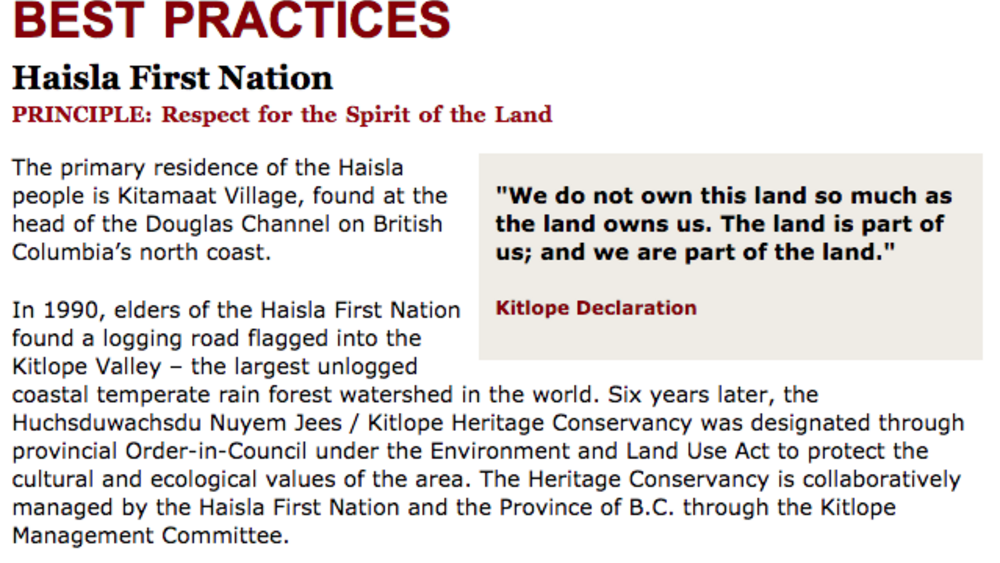Situated in southern Yukon, the Teslin Tlingit people have a clan system of government. That clan system of government operated for years prior to the imposition of the Indian Act. Through the Indian Act, traditional governance was separated from formal decision-making power and authority. Then in the early 1990s, following 20 years of negotiation, federal and territorial settlement legislation provided the basis for the creation and ratification of the Teslin Tlingit Council Final and Self-Government Agreements. Through these agreements, the Teslin Tlingit people once again were able to recognize the power and authority of their clan-based government...
Additional Information
National Centre for First Nations Governance. "Best Practices Case Study (Cultural Alignment of Institutions): Teslin Tlingit Council." A Report for the National Centre for First Nations Governance. The National Centre for First Nations Governance. Canada. June 2009. Case Study. (https://fngovernance.org/wp-content/uploads/2020/07/CAI_Tlingit.pdf, access March 7, 2023)




